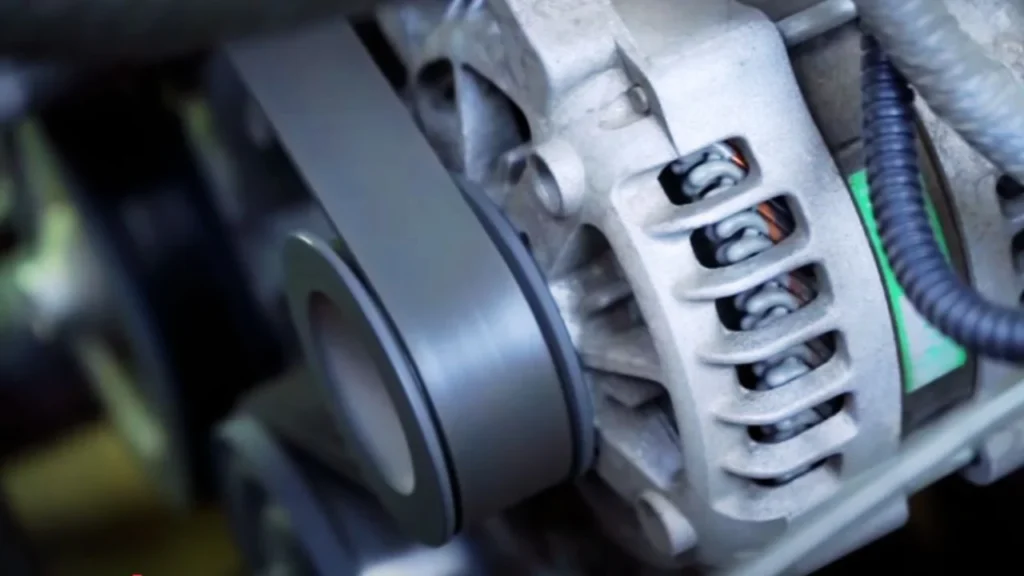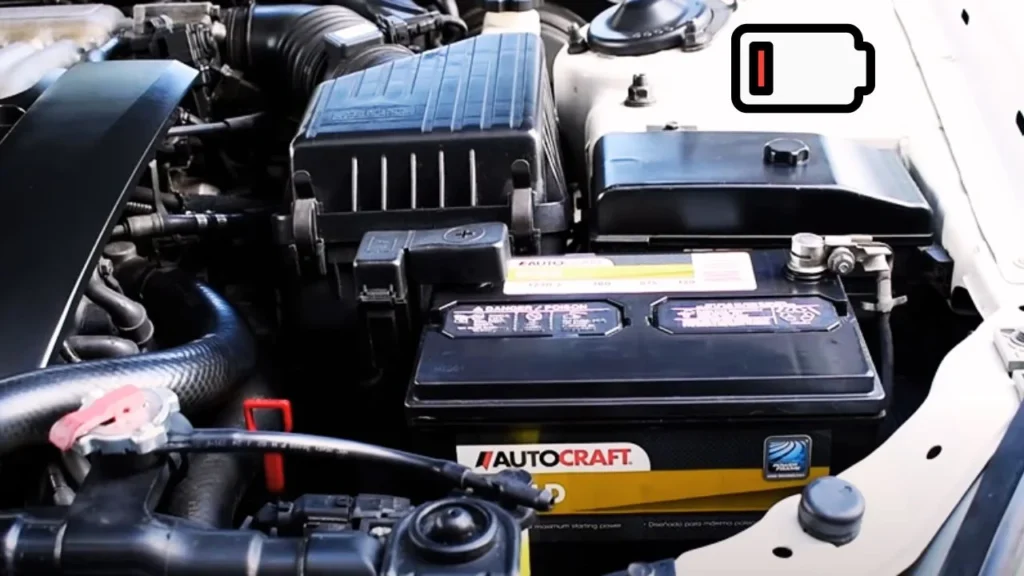A fresh battery should fix the issue, but if your car still refuses to start, something else might be wrong. New Battery But Car Won’t Start Without Jump? Around 40% of no-start problems are caused by factors other than the battery itself.
Loose connections, a bad alternator, or a faulty starter could be the real culprits. Let’s break down the possible causes and how to fix them step by step. You can find the best solutions to charge a dead battery here.
Quick Look
Loose connections cause 80% of issues, so clean and tighten terminals. Alternator and starter problems can be diagnosed by checking voltage and replacing parts. Blown fuses or parasitic drain require swapping fuses and testing electrical draw.
If you’ve recently installed a new battery but your car won’t start without a jump, it could point to other electrical issues. Fuel or ignition failures may need inspecting the fuel system or ignition switch. If you’re looking for reliable portable charging solutions, check out these top portable electric car battery chargers.
Understanding the Role of the Battery

Bro, your car battery only has one main job: to start the engine. That’s it. Once the engine is running, the alternator takes over, supplying power to everything and recharging the battery at 13.5V to 14.5V. For an easy solution to maintain charge without overloading, consider using a solar car battery charger.
If your car still won’t start without a jump, the battery isn’t the real issue. Here’s what might be going wrong:
- Loose or dirty battery terminals – If the cables aren’t tight or have corrosion, the power won’t flow properly.
- Bad alternator – If it’s not charging, your battery won’t hold power for long.
- Faulty starter motor – If the starter is bad, the engine won’t crank even if the battery is perfect.
- Parasitic battery drain – Some hidden electrical issue is draining power when the car is off.
Try these quick checks:
- Turn on your headlights without starting the engine. If they’re dim or flickering, the battery is weak.
- Check the dashboard lights. If they go out when you turn the key, it could be a connection or starter issue.
- Use a multimeter. A healthy battery should read 12.6V when off and 13.5V+ when running.
Common Reasons Your Car Won’t Start Despite a New Battery
Yes bro, you just spent money on a new battery, and your car still won’t start without a jump. That’s annoying, but don’t stress it’s not always the battery’s fault. In fact, if you’ve got a new battery but car won’t start without jump, there are eight common reasons why this happens. I’ll break them down for you in simple terms. If you’re looking for reliable charging solutions, check out these recommended car battery chargers.
1. Loose or Corroded Battery Connections

A weak connection can stop power from flowing properly, making it seem like the battery is dead. If the battery terminals are loose or covered in corrosion, your car won’t start.
How to Check & Fix:
- Try wiggling the battery cables. If they move, tighten them.
- Look for white or green buildup on the battery terminals that’s corrosion. Clean it with baking soda and water.
- Make sure the positive (+) and negative (-) cables are tight and secure.
2. Faulty Alternator – Battery Drains While Driving

The alternator charges your battery while you drive. If it’s bad, your battery won’t hold a charge, and your car will need constant jumps.
Signs of a Bad Alternator:
- Battery warning light on the dashboard
- Headlights dim when idling and brighten when you rev the engine
- Car dies after driving for a while
Quick Test:
Start the car and disconnect the negative (-) battery cable. If the engine shuts off immediately, your alternator isn’t working.
3. Bad Starter Motor – Just a Click, No Crank

If you turn the key (or press start) and only hear a clicking sound, but the engine doesn’t crank, the starter motor is likely the problem. To quickly jump-start your vehicle and get back on the road, follow these steps to jump start a starter motor.
How to Know if It’s the Starter:
- One loud click when you turn the key
- Car starts fine with a jump but won’t restart after turning it off
- Lights and radio work, but the engine won’t turn over
Temporary Fix:
Tap the starter gently with a wrench and try again. If it starts, your starter motor is failing.
4. Ignition Switch Failure – No Power, No Start

The ignition switch sends power to the fuel system and starter. If it’s bad, your car won’t start, even if the battery is fine.
Signs of a Bad Ignition Switch:
- No dashboard lights when you turn the key
- Car randomly shuts off while driving
- Key gets stuck in the ignition
DIY Test:
Turn the key to the “ON” position (without starting the car). If the dashboard lights don’t turn on, your ignition switch might be the issue.
5. Blown Fuse or Bad Relay – A Small Problem with Big Consequences

A tiny $5 fuse can stop your car from starting. If a fuse for the starter or fuel pump blows, the engine won’t crank.
How to Check & Fix:
- Locate your car’s fuse box (usually under the hood or dashboard).
- Look for a burned or broken fuse (they usually have a clear plastic top).
- Replace any bad fuses with the same amperage (like 15A, 20A, etc.).
6. Parasitic Battery Drain – Hidden Power Leak

Some electronics keep drawing power even when your car is off. If your battery keeps dying overnight, you may have a parasitic drain.
How to Test for a Battery Drain:
- Disconnect the negative (-) battery cable and reconnect it after 10 minutes. If you see a small spark, something is drawing power.
- Use a multimeter to check for excessive current draw.
7. Fuel System Issues – No Gas, No Start

If your car cranks but won’t start, the issue could be fuel-related. Your engine needs gas, air, and spark to run.
What to Check:
- Fuel level – It sounds obvious, but fuel gauges can be inaccurate.
- Fuel pump – Listen for a buzzing sound near the gas tank when turning the key. No sound means a bad pump.
- Clogged fuel filter – A blocked filter won’t let fuel reach the engine.
8. Bad Engine Ground or Wiring Issues

A weak ground connection can mess with the entire electrical system. The battery, starter, and alternator rely on a solid ground to function.
Signs of a Bad Ground Connection:
- Car struggles to start but works fine with a jump
- Random electrical issues like flickering lights
- Engine cranks but won’t fire up
How to Fix:
- Locate the thick black cable running from the battery’s negative (-) terminal to the car’s frame.
- Clean off any rust or corrosion and tighten the bolt securely.
Step-by-Step Troubleshooting Guide
Alright, buddy, so your car still won’t start even with a brand-new battery. Let’s go step by step and figure out what’s really going on. Grab a few tools and follow these simple checks.
1. Check Your Battery Voltage (Takes 2 Minutes!)
First, let’s make sure your new battery is actually charged. Sometimes, batteries lose charge during storage, or the alternator isn’t charging them properly.
- Get a multimeter (they cost about 10-20 dollars).
- Set it to DC voltage (V with a straight line).
- Place the red probe on the positive terminal (+) and the black probe on the negative (-).
A healthy battery should read 12.6 to 12.8 volts when the engine is off. If it’s below 12.4 volts, it needs charging. If it’s below 12 volts, you may have another issue.
If your voltage is low, try jump-starting again and check if the voltage increases when the engine is running. A good alternator should bring it up to 13.8 to 14.5 volts. If not, your alternator could be bad.
2. Test the Alternator While Engine is Running
The alternator’s job is to charge the battery while you drive. If it’s failing, your battery won’t stay charged.
- Start the car (or jump it if needed).
- Keep the multimeter connected and check the reading.
A good alternator should show 13.8 to 14.5 volts while the engine is running. If it stays at 12 volts or lower, your alternator isn’t working properly, and that’s why your car won’t start without a jump.
If the alternator is the problem, replacing it can cost around 100 to 400 dollars, depending on the car model.
3. Listen for Clicking Noises – Starter Might Be Bad
If you turn the key and hear a single loud click, that’s a sign of a bad starter.
- If you hear rapid clicking, the battery might still be weak, or the connections are corroded.
- If it clicks once and nothing happens, the starter motor or starter solenoid could be faulty.
A failing starter usually costs around 150 to 500 dollars to replace. Before buying a new one, try tapping the starter lightly with a wrench—it might just have a stuck gear.
4. Check for Blown Fuses (Super Easy!)
Sometimes, a blown fuse is all that’s stopping your car from starting. This is a 5-dollar fix, so it’s worth checking.
- Locate the fuse box (usually under the hood or dashboard).
- Look for the starter relay or fuse (your owner’s manual will help).
- If the fuse is blown (broken wire inside), replace it with the same AMP rating.
If your car starts after swapping the fuse, the problem is solved. If the new fuse blows again, there’s an underlying electrical issue.
5. Check for Loose or Corroded Battery Cables
Loose or corroded battery terminals can stop power from flowing, even if your battery is good.
- Wiggle the battery cables they shouldn’t move.
- If they’re loose, tighten them with a wrench.
- If you see white or green corrosion, clean it off with a mix of baking soda and water.
Applying petroleum jelly on the terminals can help prevent future corrosion.
6. Test for a Parasitic Battery Drain
If your battery dies overnight or after a few hours, something is draining it. Here’s how to check:
- Disconnect the negative battery cable.
- Use a multimeter and set it to amps (A) mode.
- Connect the multimeter between the negative terminal and the battery post.
A normal drain should be less than 50 milliamps (mA). If it’s over 100 mA, something is pulling power.
Preventative Measures to Avoid Future Issues
Alright buddy, let’s make sure you don’t run into this headache again. A new battery should last 3 to 5 years, so if you’re already dealing with a no-start issue, it’s time to prevent bigger problems down the road. Here’s what you need to do:
1. Keep Your Battery in Good Shape
- Check your battery terminals every 2 months for corrosion. A little white or green buildup? Clean it up with baking soda and water.
- If your car sits unused for weeks, start it up at least once a week to keep the battery charged.
- Get your battery tested twice a year most auto shops do this for free.
2. Watch Out for Parasitic Battery Drain
- If your battery dies overnight, something is pulling power when it shouldn’t.
- Common culprits? A trunk light that stays on, a faulty radio, or a security system draining power.
- Quick test: Disconnect the battery at night and reconnect it in the morning. If the car starts fine, you’ve got a parasitic draw issue.
3. Don’t Ignore Your Alternator
- Your alternator should charge the battery at around 13.5 to 14.5 volts when the engine is running.
- If you notice dim headlights or flickering dashboard lights, get your alternator tested ASAP.
- A weak alternator can kill a new battery in less than a week if ignored.
4. Secure Those Battery Cables
- Loose or corroded battery cables can mimic a dead battery.
- Check that your battery terminals are tight enough that you can’t wiggle them by hand.
- If you ever had to jump your car, make sure the cables weren’t knocked loose in the process.
5. Turn Off Accessories Before Shutting Down
- Leaving headlights, interior lights, or the radio on can drain your battery fast.
- Get into the habit of turning everything off before shutting the engine off.
- In cold weather, use your heater only while the engine is running, since it pulls extra power from the battery.
6. Be Smart About Jump-Starting
- If you jump-start your car often, your battery or alternator has a bigger issue.
- Don’t keep relying on jump-starts get the real problem diagnosed before your battery gives up completely.
7. Replace Key Components on Time
- If your battery is older than 4 years, start planning for a replacement.
- A failing starter or alternator can make a new battery useless if either of these parts is struggling, replace them before they fail completely.
When to Seek Professional Help
Alright, buddy, if your car still won’t start without a jump, it’s time to call in a pro. Here’s when you should stop guessing:
- Battery Keeps Dying – If you’ve jump-started 3+ times in a week, get it checked.
- Weird Noises – 1 click? Bad solenoid. Rapid clicks? Weak battery. Grinding? Worn starter.
- Starts, Then Dies – Lasts 5-10 seconds? Could be the alternator, ignition switch, or fuel pump.
- Flickering or Dim Lights – While driving? Alternator might be failing.
- Burning Smell or Smoke – Shut it off immediately and call a mechanic!
- Cold Weather Struggles – Below 30°F (-1°C)? Get a cold-cranking amps test.
- Tried Everything, Still No Luck – If 5+ fixes failed, save time and get a pro to diagnose it.
Conclusion
Alright boys, if your New Battery But Car Won’t Start Without Jump, there’s more going on than just the battery. Loose cables, a bad alternator, or a faulty starter could be the real issue. Check voltage (12.6V+ off, 14V+ running) and troubleshoot first. Fix it now and avoid costly repairs later. Stay smart on the road.
FAQs
Q1. Why does my car need a jump start even with a new battery?
A new battery doesn’t always fix the issue. Loose connections, a bad alternator, faulty starter, or a blown fuse could be the reason. Check your battery terminals, voltage, and starter system to pinpoint the problem.
Q2. How do I know if my alternator is the problem?
If your car dies while driving or the battery keeps draining, your alternator may not be charging properly. Use a multimeter it should read 14V+ when the engine is running. Anything lower means the alternator needs checking.
Q3. Can a bad starter cause my car to need a jump start?
Yes, a faulty starter or starter solenoid can make it seem like a dead battery. If you hear a single click or no sound at all when turning the key, the starter may be the issue.
Q4. What should I check first if my car won’t start with a new battery?
Start with the basics:
- Battery connections (tight and clean)
- Voltage check (should be 12.6V+ off, 14V+ running)
- Fuses and relays (replace if blown)
- Starter and alternator (listen for clicking or dimming lights)




